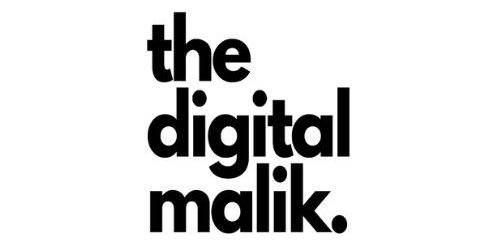How AI Reshapes SEO and Reputation Management 2025

In this article, I plan to explore how the latest technology and hands-on strategies can help businesses grow stronger online.
We’ll dive into and learn about how AI Reshapes SEO and Reputation Management, using new methods, data, machine learning, and creative reputation fixes to build trust and visibility. Insights come from practical steps that everyday people can adopt for a better digital presence.
Simple tips show clear gains for small groups.
Key Takeaways
AI is changing the way we approach SEO and reputation management by using smart data and insights. This can help boost your online presence.
Building trust with your readership is crucial. Engage with them and create a positive experience they want to come back to.
Monitoring what is said about you online is important. Use tools like Reputation.com to ensure any negative feedback is addressed quickly
Focus on practical strategies to make sure your blogging business stands out. Finding the right tools, like Ahrefs for SEO, can lead to real, measurable growth.
- Our expertise can guide you in navigating the digital landscape. By combining tools, strategies, and real-world insights, you can effectively elevate your blogging business in a competitive space.
AI Reshapes SEO and Reputation Management: SEO Trends
Smart Algorithms in Action
Search engine optimization in the past couple of years has undergone a tremendous change because of clever algorithms that have been machine learning-based. Not only do they help identify the proper keyword, but they also comprehend the user behavior on an individual basis with time. As per search patterns, they can predict what the user might be looking for even before they finish typing. Digital business owners are making the most of these changes, and it’s simple once you understand how:
- Identify your key topics by mind mapping general areas of concern relevant to your company.
- Apply an AI-based keyword program to generate long-tail terms that meet the purpose of user search.
- Verify your keyword choices by comparing competition and volume using industry favorite tools.
Real-life scenarios are examples of how brands adapt their content on a near-real-time level. Consider a company that posts a blog post, and within hours, its performance is recalculated by a smart algorithm that suggests tweaks in headline wording or meta description. Not only does this improve ranking, but it also precisely matches changing consumer queries.
Natural Language Processing and Content Insights
Natural language processing (NLP) has been a game-changer in content generation and optimization. It allows computers to interpret and read common language in a way that’s almost human-like.
This technology is used to scan, analyze, and even generate content that humans resonate with. What’s important here is the ability of AI to break down large quantities of text and yield significant ideas relating to search queries.
Step by step, this is how you can use NLP to find more content insight:
- Insert your existing text into an NLP tool and get the underlying topics and sentiment out.
- Scan for any gaps in your copy where user questions may not be fulfilled.
- Revise your copy with easier vocabulary or additional examples, ensuring that you deal clearly with user intent.
NLP not only makes your content timely in accordance with present-day trends but also assists in the reuse of your content for various forms of media.
From writing about the latest trends online or a brief social media post, applying NLP insights makes sure that your voice and tone are compatible with what your audience is accustomed to.
Real-Time Analytics: The New Standard
Classic SEO was all about periodic reporting and retrospection analysis. The modern era requires real-time analysis. Since the introduction of AI into analytics, marketers now have the ability to monitor user engagement and performance metrics in real-time. That’s right; if a landing page or keyword is not performing, measures can be taken instantly to remedy the situation.
Here’s a speedy rundown of how to incorporate real-time analytics into your workflow:
Set dashboards displaying real-time streams of your website traffic and keyword rankings.
Use notifications and automated reporting to inform your staff about any sudden changes in user activity or areas of difficulty.
Change quickly by testing new approaches and trying out the results quickly.
Software like that espoused by authors referenced on Neil Patel and Moz offers seamless linking of these real-time streams. In addition, comparing different analytic platforms with its features is not a challenge for users.
| Feature | Tool A | Tool B |
|---|---|---|
| Real-Time Reporting | Yes | Yes |
| User Behavior Insights | In-depth | Moderate |
| Ease of Integration | High | Moderate |
| Custom Alert Features | Customizable alerts | Basic alerts |
Utilizing real-time analytics not only speeds up adjustments but also translates directly into improved user experiences and better SEO outcomes.
Reputation Management Reinvented
Advanced Sentiment Analysis
Just like the business, reputation is everything, as is the case in the digital world of the internet. Sentiment analysis, powered by artificial intelligence, monitors brand mentions across a broad range of sources, from social media all the way to news headlines.
This advanced monitoring picks up nuances in language, detecting even the subtlest shifts in opinions. For instance, a simple shift in wording on Twitter or a blog review can be detected before it becomes an issue.
To implement effective sentiment analysis, you can consider these steps:
- Monitor your brand’s keyword mentions across different platforms using a dedicated sentiment analysis tool.
- Set parameters for positive, neutral, and negative sentiments to understand exactly where your brand is gaining or losing trust.
- Regularly review the data and adjust your messaging strategy based on what the insights reveal.
Setting up alerts can ensure you never miss a critical piece of feedback. Tools like Reputation.com offer customizable dashboards that present sentiment trends and help forecast potential crises before they fully develop.
Crisis Monitoring and Management
When it comes to managing online reputation, early detection is critical. AI-based crisis monitoring tools combine real-time analytics and sentiment analysis to detect early warning signs. These systems continuously scan social media, forums, and review sites to catch emerging issues quickly.
Here’s a step-by-step guide for crisis monitoring:
- Establish baseline performance metrics for your brand’s overall sentiment score.
- Use AI tools to set custom alerts so that any significant deviations trigger an immediate review.
- Create a crisis management plan that includes clear roles, responsibilities, and a response chain.
Crisis management is just as much about being prepared for crises as it is being prepared to respond to them as they occur. Some of the platforms also have the feature of automated messages that help in creating initial responses.
The automated alerts help your team to be quick, reducing potential damage. Advanced dashboards provide graphical representations of areas of risk and potential effect, helping facilitate the quick decision-making process.
Proactive Response Strategies Using Emerging Tools

With reputational risk, being proactive is always better than being reactive. AI tools are weighing the balance by tracking and even suggesting ways to engage with customers in a good way before things become a problem.
AI tools leverage historical data to predict what kinds of content or interactions are likely to prevent crisis situations.
Consider these proactive strategies:
- Monitor sentiment information regularly to be aware of trends and respond to feedback before it is drastic.
- Develop pre-approved response templates that could quickly be customized and deployed in case of negative trends.
- Schedule regular reviews of your digital reputation with your team, integrating feedback from customers and industry benchmarks.
By leveraging tools such as Ahrefs and reputation management software, you obtain an end-to-end view of your online reputation.
By integrating keyword performance with sentiment analysis, you will be able to maximize your online approach to build stronger, more resilient trust between your audience.
Case Studies and Future Directions
Real-World Implementations and Automation Benefits
Many companies have started to see substantial benefits from adopting AI in their SEO and reputation management strategies. Take, for instance, a mid-sized e-commerce business that integrated an AI-driven workflow.
By using automation, they were able to revamp their keyword strategy significantly and monitor customer sentiment in near real-time. This allowed them to adjust marketing tactics daily, ensuring that their content remained relevant and engaging.
A typical workflow might include the following:
- The business uses an AI tool to periodically scrape data from customer reviews and social media platforms.
- The tool automatically categorizes feedback into buckets such as positive, neutral, and negative, flagging any anomalies for review.
- Next, the insights are shared with the content team, who then update blog posts or product descriptions to better reflect customer interests.
- Finally, the performance metrics are compared to real-time analytics that confirm gains in ranking and user engagement.
These steps have proven effective not only in improving search engine placement but also in maintaining a consistent, trustworthy online image.
Automation reduces human error, speeds up reaction time, and ultimately allows for a smoother workflow between departments.
Evolving Consumer Behavior and Digital Trust
The digital world is constantly moving, and behavior evolves at the same pace. Audiences today are better educated, sharing opinions quickly across media.
Trust is therefore established not only through marketing but on sustained, authentic interaction across all touch points. AI assists in monitoring these changes in real-time, enabling organizations to evolve strategies suitably.
Key insights on evolving behavior include:
- Customers disbelieve super smooth marketing presentations more; they crave authenticity and transparency.
- Feedback in real time is a crucial factor for online trust. If brands can solve problems in real time, audiences listen and appreciate being heard.
- Having presence on multiple channels is important. People go and unearth information about a brand on multiple channels before they form an opinion.
Digital entrepreneurs can tap into such evolution by automating partly customer interaction processes, gorging on analytics that identify when and where to respond.
In addition, comparative tests across channels—social networks, blogs, and search engines—signal where trust gaps exist.
An internal analysis, for instance, might compare the engagement levels on organic search channels with those on social media posts, revealing unexpected areas of opportunity.
Future Predictions in AI-Driven SEO and Reputation Management
Looking ahead, the integration of AI into both SEO and reputation management is only going to increase. Experts predict that by 2025, AI will be crucial in foreseeing consumer queries and preemptively adjusting strategies before major trends even form. We can expect the following trends to dominate the landscape:
- Enhanced personalization that tailors content dynamically based on real-time user behavior and historical data.
- Integration of voice search optimization, as conversational queries become more common.
- More refined sentiment analysis tools capable of distinguishing complex emotional cues from text and video content.
These technological shifts will result in a future where digital strategies are not only more efficient but also highly responsive to consumer needs.
Entrepreneurs and digital marketers are encouraged to experiment and invest in these AI tools to stay ahead.
It may also be helpful to review resources such as articles on Search Engine Journal to gain further insights into upcoming trends and market predictions.
Strategic Implications for Digital Success
The way AI is shaping SEO and reputation management has major strategic implications. Digital entrepreneurs must now balance technical innovations with authenticity and ethical considerations.
As you build your digital presence, here are actionable steps to consider:
- Adopt a hybrid strategy that combines AI-driven automation with human oversight. Even the best algorithms need context, especially when handling customer relationships.
- Use data-driven insights to refine your content strategy continuously. Whether you are optimizing for search engines or managing brand sentiment, steady improvements based on real data can dramatically improve outcomes.
- Explore available tools and templates for managing both SEO and reputation. For instance, you can use the step-by-step guides available on How To Write A Blog Post to ensure that your content is both engaging and optimized.
- Integrate multi-source data by combining real-time analytics with historical performance logs. This will ensure your strategy is resilient even when market conditions change sharply.
- Prioritize transparency in every customer interaction. Over-reliance on automation without clear, genuine engagement may come off as impersonal—something that modern consumers are quick to notice.
Additionally, digital entrepreneurs should consider the ethical side of AI. With great power comes great responsibility.
Ensure that any data gathered is used ethically and that privacy standards are never compromised. Frequently review your compliance measures, especially if you’re operating in regulated markets.
One useful way to track improvements is to maintain a performance dashboard that captures both SEO metrics and reputation scores.
This combined view helps in pinpointing which strategies yield the best overall results. Comparing before-and-after scenarios in a simple table can highlight areas of progress:
| Metric | Before AI Integration | After AI Integration |
|---|---|---|
| Keyword Ranking Improvements | Slow, often lagging | Rapid, dynamic updates |
| Online Sentiment Score | Manual tracking errors | Real-time, precise |
| Crisis Response Time | Delayed notifications | Instant alerts |
| Overall Engagement | Inconsistent | Consistently strong |
Using a table like this not only highlights measurable improvements but also helps communicate the value of AI investments to stakeholders.
If you’re new to these tools, my best advice is to keep things simple. You don’t have to overhaul your entire process in one go. Pick one tool that looks interesting and learn it backwards and forwards.
A basic sentiment analysis tool or a basic analytics dashboard is a great place to begin—it gives you a real-time window into what people are saying and how they’re reacting.
As you get more comfortable, you can add more complex features in increments. This is a gradual process that does not make the learning process overwhelming.
I often see eagerness to automate everything at once, but that can backfire.
The real secret sauce isn’t full automation; it’s using these tools to better understand your audience. That means running small tests with your content, using AI to monitor the outcomes, and letting that real-world feedback guide your next moves. It’s a continuous cycle of learning and adjusting.
For a more detailed examination of building a sustainable approach, I consistently recommend taking a look at comprehensive guides, like the “White Hat Vs Black Hat SEO: The Ultimate Guide for 2025.”
It’s an excellent tool for avoiding possible pitfalls and foregrounding practices that build sustainable trust.
Take a step back, and you’ll notice this isn’t just a tech upgrade. It’s not just about applying AI to SEO and reputation management. It’s really about engaging with your audience on a deeper level. It’s being proactive, letting the data inform what you do, and conducting yourself with integrity at all times.
That’s where you establish the competitive edge that gets stronger as time goes on.
What does that mean in action?
It means regularly tracking your brand’s online reputation, keeping a keen eye out for emerging trends, and being willing to modify your approach. And through it all, the most critical ingredient remains your authentic voice.
Technology can provide the analysis, but being straightforward with communication builds trust that no algorithm can match on its own.
In balancing these factors, you’re basically creating an online presence where people feel visible and appreciated.
The digital future belongs to those who can find this balance: leveraging AI for its incredible precision, without ever compromising the human factor that inspires true trust and loyalty.
Final Thoughts
This article recaps how AI is reshaping SEO and reputation management. We learned that smart algorithms, building trust and real-time insights are key drivers.
The digital space is always changing, and these simple strategies can go a long way. Our expertise at The Digital Malik can help you elevate your blogging game. Start small, tweak your approach, and keep building your digital journey.
Related Posts
Frequently Asked Questions (FAQs)
What exactly is a digital blogging business?
A digital blogging business is basically an online platform where you create content, share ideas, and connect with readers; it’s a bit like running an online magazine but with more personal touch and direct interaction with your audience. By getting into it, you can learn about topics that interest you and even make money through ads, sponsorships, or affiliate marketing.
How do I choose the right tools for my blogging business?
Picking the right tools starts with understanding your audience and what goals you have for the blog. There are many great resources and platforms that can help with writing, editing and even SEO; it’s smart to check resources like Google Analytics and WordPress for insights that match your needs. You might need a mix of content creation tools and social media managers to keep everything running smoothly.
What role do strategies play in a digital entrepreneurial journey?
Strategies serve as your roadmap when building an online presence; they help you plan how to get your message across, attract readers and eventually build trust. Even if things feel a bit messy sometimes, having a clear strategy can prevent you from getting overwhelmed and keeps your business goals in clear focus.
How can I handle reputation management online effectively?
Managing your online reputation is about keeping an eye on what’s being said about your blog and your brand. Whether it’s responding to reader comments or fixing small issues before they become big, it helps to use monitoring tools and feedback channels so you can quickly address problems. Regularly checking platforms like Reputation.com might help you stay on top of things.
How can I Elevate Your Digital Blogging Business: Discover Essential Tools, Strategies, And Insights to Fuel Your Digital Entrepreneurial Journey?
Our approach is based on a mix of real-world experience and practical advice. We suggest starting by identifying the most effective tools that match your style, like using Ahrefs for SEO insights or Canva for better visual content. Beyond software, focus on clear strategies that engage your audience, raise awareness and ultimately, convert followers into loyal readers. By following these steps and continuously experimenting, you slowly build a robust digital presence that fuels both growth and trust in your brand.






